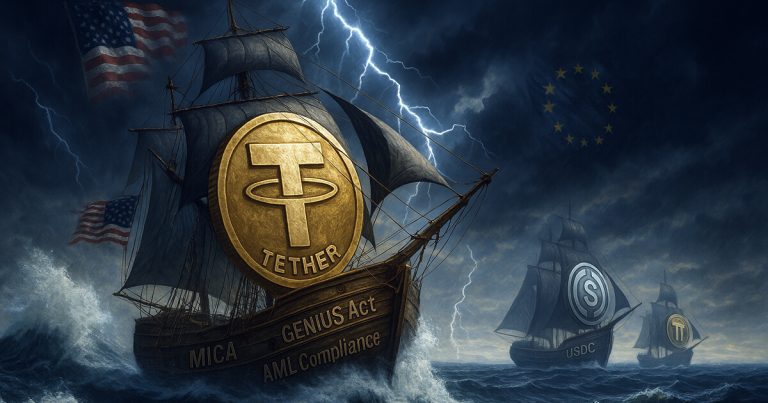Below are guest posts and opinions from Anastasija Plotnikova, CEO and co-founder of Fideum.
2025 is known as the “Year of Stablecoin” and stabrecoin has gained popularity and has achieved global status, particularly under the new crypto-friendly US administration.
Major Fiat-backed Stablecoins USDT and USDC hold 92% of the market share. Tether, the issuer of USDT, supports more than 400 million users, particularly in the bank’s region, growing to a market capitalization of over $140 billion.
However, Tether’s advantage faces an increase in competition. New, well-established competitors are keen to gain market share, with new regulatory hurdles putting pressure on them, especially in markets like the European Union. This raises an important question. Can we connect the dominant, silly, silly places that are silly amid growing regulatory pressures and competition?
EU and Tether
Tether’s USDT was recently delisted from the EU exchange as it did not violate the new markets of Crypto-Assets (MICA) regulations that took effect late last year. Regulations require standardized coins that are stub coins to meet strict transparency and licensing rules, and companies that issue stub coins in the EU must maintain an electronic money agency (EMI) license and have a 1:1 reserve ratio if supported by Fiat.
Tether’s delisting caused major disruption in the European market, reducing access to Stablecoins for EU residents. Tether responded by denounced the EU as “hurried action” and creating a “disordered market,” but MICA has been in development for many years, and the European Securities and Markets Agency (ESMA) has been warning of exchanges since last summer. Ten Stablecoin publishers were approved for operation under MICA, but no tethers were in it.
Is the US friendly?
The EU is not the only region where Tether faces regulatory challenges. Recently, the US Senate Banking Committee voted to send laws for stable coins to the full Senate, focusing on payments. The bill will have US dollar-controlled stability issuers with market capitalization of over $10 billion under US federal regulations. Foreign idiots like Tether face more stringent reserve, liquidity, and anti-money laundering requirements compared to domestic publishers.
Only two publishers who meet the federal regulations market capitalization requirements listed in the bill are Tethers and Circles. The latter announced that it is the dominant US issuer and can follow the bill’s requirements. However, Tether, a resident of El Salvador, lacks the formal US presence and may struggle to meet these new standards. This makes Tether vulnerable to scrutiny of additional US regulations.
Competitors are rushing to fill the gap
When Tether faces regulatory challenges, competitors are securing opportunities. Among the new challengers is Tether co-founder Reeve Collins. He recently announced the launch of Pi Protocol, a yielding stablecoin supported by real-world assets.
The PI Protocol aims to debut in 2025 with the Ethereum blockchain and the Solana blockchain. Although the PI protocol may not fully comply with MICA regulations, its yield structure offers benefits, particularly in the US market approved by the SEC in February.
Competitors like Collins’ PI protocol may view Tether’s regulatory issues as opportunities to gain market share. Tether CEO Paolo Ardoino has it Expression Confidence in this possibility argues that many competitors’ true purpose is to “kill the tether.”
Stablecoin Storm is unlocked
Can Tether survive growing competition and increasing pressures of regulation? Until now, Tether has faced minimal disruption due to its large dominance in market share, leading the cheaper category significantly in terms of market capitalization and 24-hour trading volume. However, as global regulations catch up and new players enter the scene, Tether will need to carefully navigate the challenges. The result is fragmentation of the global Stablecoin market and could be a division between UnregulaTed and Regulatory Options.
It is mentioned in this article






